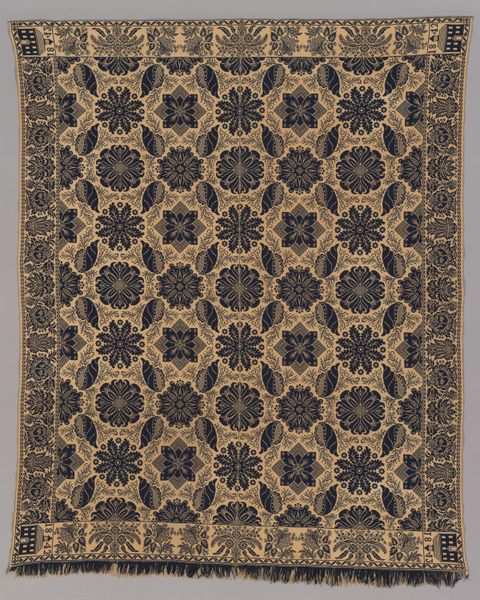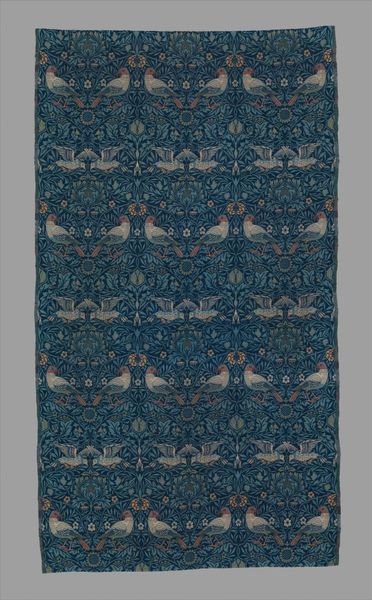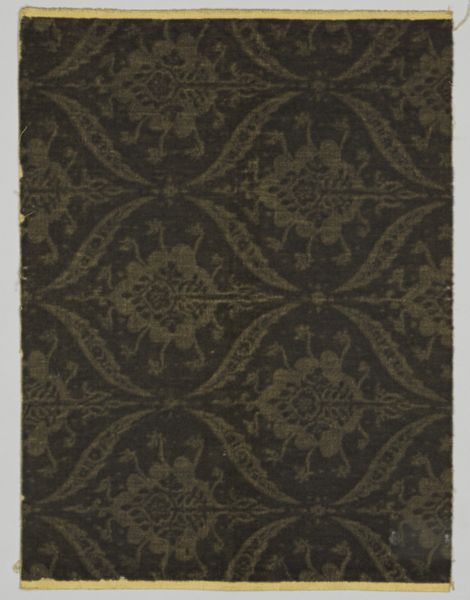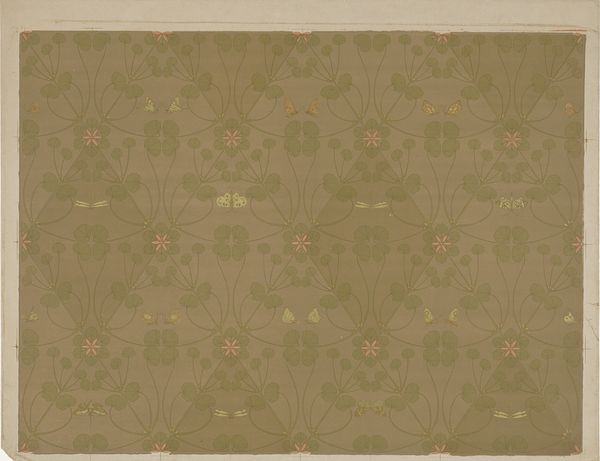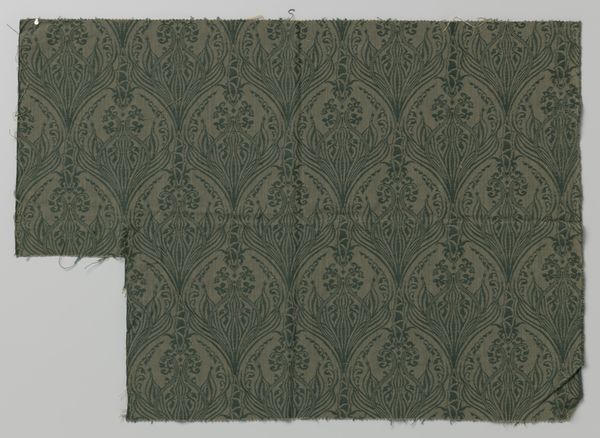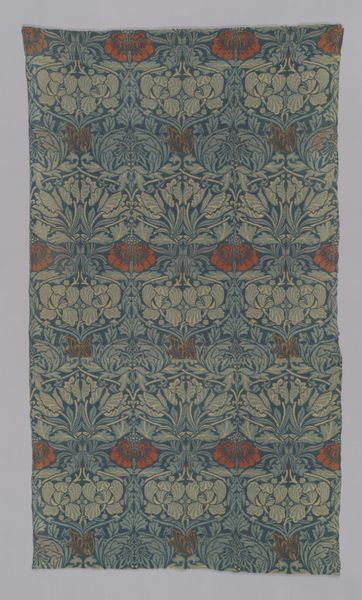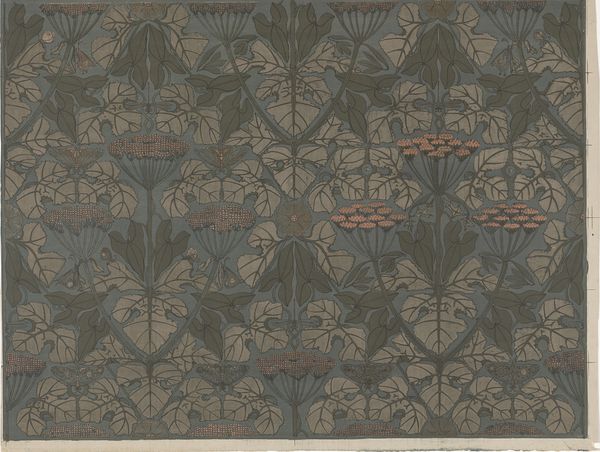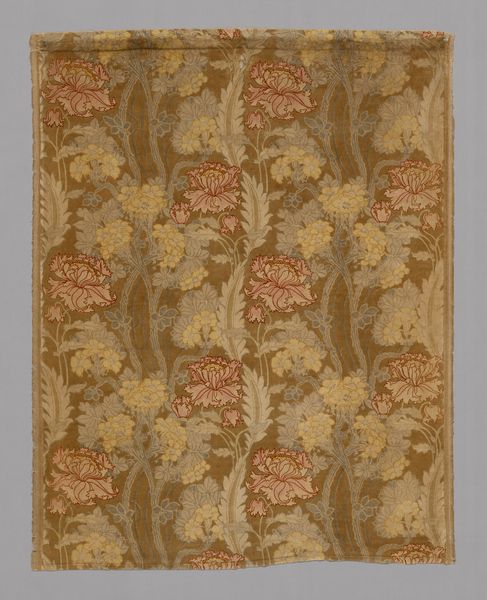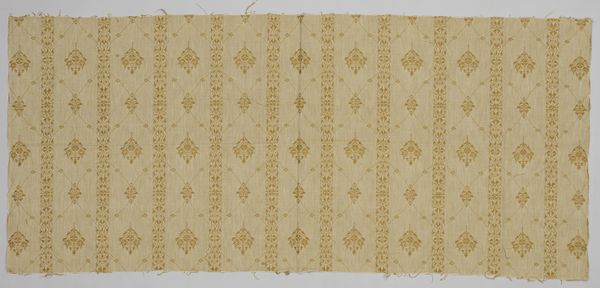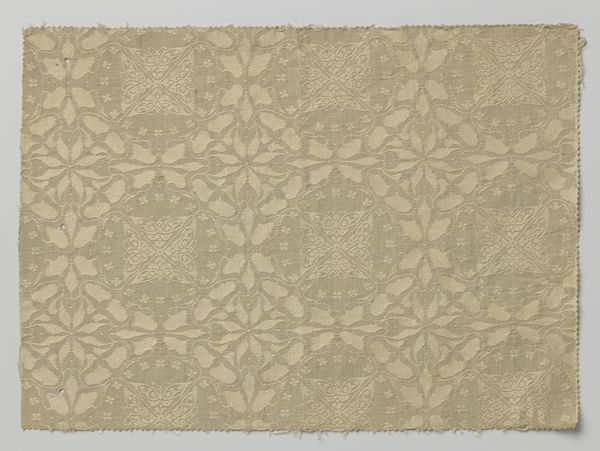
Dimensions: Overall: 69 x 26 in. (175.3 x 66 cm)
Copyright: Public Domain
Editor: We're looking at "Chandos," a textile piece created between 1868 and 1878 by Owen Jones. It lives here at the Met, in New York. It's dense! So many interlocking shapes and a subdued palette... What stands out to you most when you see this, especially knowing its background within the Arts and Crafts movement? Curator: The first thing that captivates me is how Jones manages to achieve such visual complexity with such a limited colour palette. He invites you to decode its secrets. But this textile it speaks to me of order and structure inspired by nature but made man made in the way of repetitive symmetry! It makes me ponder, "Is this what Jones felt it was to tame the chaotic essence of nature?". Editor: Tame the chaos, I like that! I can see that in the rigidity of the geometric patterns sitting alongside the more fluid organic shapes, but they also repeat seamlessly so my eyes just glaze over, it sort of disappears when you look at it! Does this seamless, repetitive feel tie in with anything that was happening at the time? Curator: Absolutely! Jones's work was profoundly influenced by his study of historical ornament from various cultures. It becomes about functionality rather than pure decoration, like an extension of everyday life itself. Doesn’t it feel, perhaps, more modern because of that reason, if not aesthetically? Editor: Definitely! I hadn't thought about the blend of the historical and modern, I was so busy looking at the colours! Thanks for making me think of the piece from a new perspective. Curator: Likewise. It’s fascinating how a seemingly simple decorative piece can reveal such layered dialogues across time and culture. Isn’t that the magic of art?
Comments
No comments
Be the first to comment and join the conversation on the ultimate creative platform.
